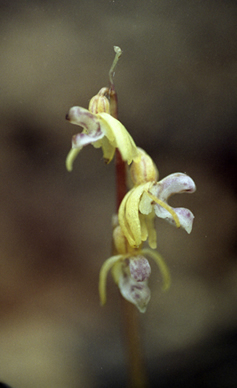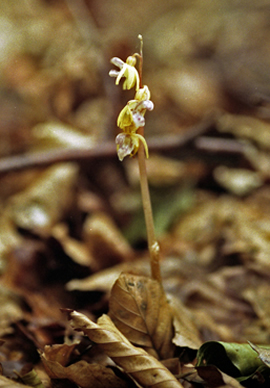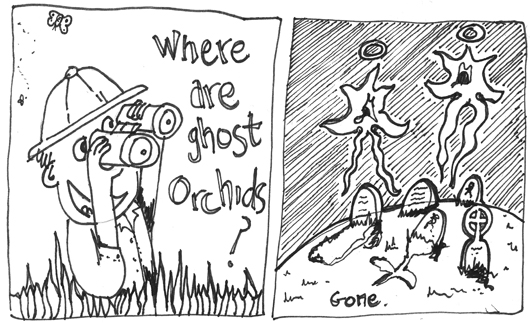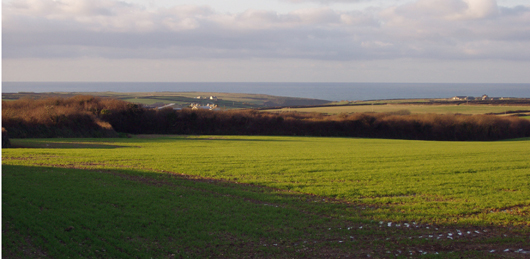UK: Where have all the Ghost Orchids gone?
15.10.09
The Ghost Orchid is an apt name for a plant that hasn’t been seen for such a long time, but sadly it's the latest addition to the UK extinct list.
“Never say never with Ghost Orchid people,” says Sue Nottingham from Plantlife, but 23 years is an awfully long time. It seems its native beech woodlands in Shropshire, Oxfordshire, Herefordshire, and Buckinghamshire can no longer support this sensitive species. It can’t be grown from seed and so it has become the symbol of Plantlife’s latest report "The Ghost Orchid Declaration" - which is is a statement of intent to ensure that no more wild species are lost in the 21st century.


These haunting photographs were taken by Nigel Kendall on the 15th July 1987 and perhaps represent one of the last Ghost Orchids to flower in the UK.
Colin French, author of the Flora of Cornwall, told me: “Orchids are very sensitive to change and there can be 20 to 30 years between sightings, but it is important to create and protect good habitats and allow the flowers to set seed." There have been success stories, the Green-winged Orchids flourishing again on the Lizard Peninsula for one; but many people just do not remember when they last saw a wild orchid. Not even a Ghost Orchid... they can't remember seeing any orchid.

According to Plantlife an astonishing one in five wild flowers in the UK is at risk of extinction. Marginalised to the fringes of the countryside, mainly human pressures and the homogenisation of landscapes are taking their toll on these underestimated and undervalued foundation stones.

The UK countryside is a shadow of its former vibrant self
You would think then that with one in five at risk and 549 plants (and fungi) on the UK Biodiversity Action Plan (BAP) list - around half the total – there would be some degree of proportional representation in conservation funding and activities. Not so say Plantlife.
Joint Nature Conservation Committee research contracts in the years 2007 to 2009 provided no funding to plants and fungi with the majority going on marine data and policy. Birds are, naturally, well represented and in the RSPB have one of the largest membership organisations in the land, which wields considerable political weight.
Plantlife suggest that the decision makers have simply forgotten that having a healthy flora is fundamental to the health and well-being of all other life. We are missing too many opportunities by focussing resources at single species without considering the health of the habitat. They cite Breckland Forest SSSI in Suffolk – internationally important for woodlark and nightjar - that is one of the UK’s 150 Important Plant Areas. Despite boasting rarities, such as Maiden Pink and Purple Milk-vetch habitat management has largely focussed on improving the lot of birds and thereby missed a massive opportunity to improve an exceptional flora.
But keep the faith, it’s not all bad news. Earlier this year Plantlife reported that 2009 has been a great year for some of Britain's rarest plants, such as Stinking Hawk’s-beard, which has been extinct in the wild for three decades, and was re-introduced to Rye Harbour Nature Reserve, Sussex four years ago. The last wild colony was recorded at Dungeness, Kent in 1980 and early attempts to give Dungeness back its colony failed. But four years on at Rye the population now stands at 1,035 and epitomises what can happen when people work in partnership.
Download the full report from Plantlife
If you read this you might like these too:
UK: Lower plant strategy for Wales
09.09.09
 The mosses, lichens and liverworts - collectively known as lower plants - in alliance with fungi (and those who study them!) are the unsung heroes of natural history. So a new strategy produced by the wild plant charity Plantlife in conjunction with Plant Link Cymru comes as good news for fans of these strange beings.
The mosses, lichens and liverworts - collectively known as lower plants - in alliance with fungi (and those who study them!) are the unsung heroes of natural history. So a new strategy produced by the wild plant charity Plantlife in conjunction with Plant Link Cymru comes as good news for fans of these strange beings.
UK: 2009 is a good vintage for Britain's rarest plants
01.09.09
The wild plant conservation charity, Plantlife, report that 2009 has been a great year for Britain's rarest plants.
The Burren: Invasive scrub threatens Ireland's botanical jewel
09/08/09
Changes in management techniques threaten one of Europe's most important botanical sites, but a team of scientists and farmers are working together to safeguard its future.
21/07/09
 New research published by Bournemouth University (UK) in Proceedings of the Royal Society B shows something quite unexpected.
New research published by Bournemouth University (UK) in Proceedings of the Royal Society B shows something quite unexpected.
Perhaps counter-intuitively the research shows woodlands are losing biodiversity but the species composition is remaining roughly similar. By comparing Dorset woodlands, in south-west England, with the same woods 70 years ago the researchers found they are suffering from "taxonomic homogenisation."